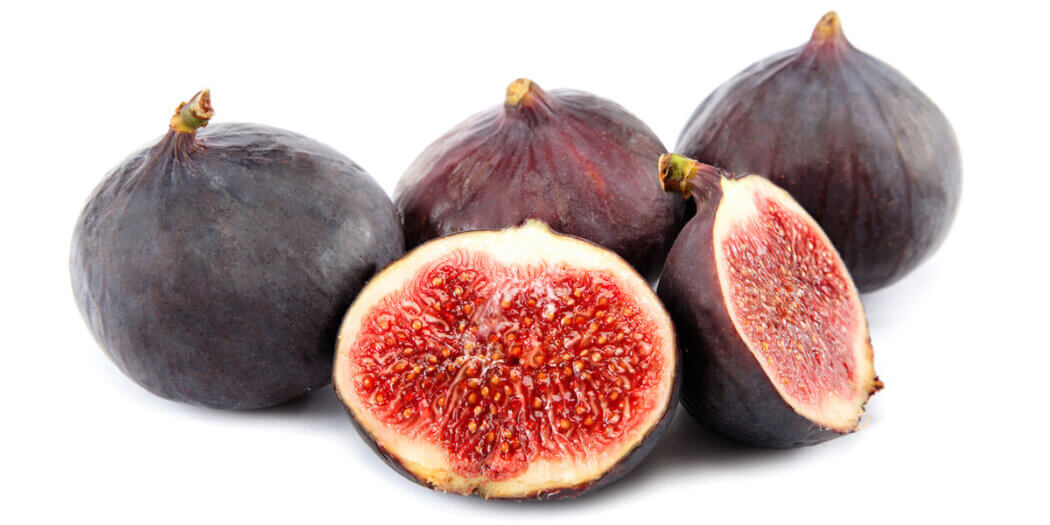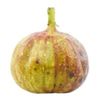Grocery Guides
Figs – All You Need To Know | Instacart’s Guide to Groceries

While many of us grew up on Fig Newtons and still think of cookies instead of fruit when figs are mentioned, these honey-flavored delights have a rich cultural history as “The Fruit of the Gods.” In this inclusive guide, we’ll show you everything you need to know about fresh figs.
What is a fig?
Figs are among the oldest cultivated fruits, known for their sweet honey flavor and soft jam texture. Technically, figs aren’t fruit but inverted flowers. There are several varieties of figs, but these are the most common types:
- Brown Turkey Figs – have brownish-purple color skin and a mild flavor. This variety is found most often at fresh fruit markets.
- Black Mission Figs – are typically black. They’re moist and flavorful, yet they’re the type that is usually dried.
- Calimyrna Figs – feature a nutty flavor and golden skin. Many people eat this variety raw.
- Kadota Figs – are yellow, green, and quite sweet. They taste best drizzled with honey or turned into jams.
- Adriatic Figs – are often referred to as candy-striped figs. These ultra-sweet figs often are pink or red inside.
Where did figs originate from?
Figs first technically appeared in Asia Minor, and the Greeks and Romans carried it to the Mediterranean. In the 16th century, missionaries brought figs to southern California.
Nowadays, almost 98 percent of fresh figs in America are grown in California. Fresh figs don’t ship well, so it’s best to find a local source. Some southern states also grow figs.
What is the nutritional value of figs?
One fig has around 50 calories, while a ½ cup of fresh chopped fig is about 80 calories. Figs contain one of the highest plant-based calcium sources, and they include several antioxidants.
How are figs grown?
Figs grow both in containers and in the ground, making them a popular choice for backyard gardens. While many figs come from warmer Mediterranean climates, they can also thrive in more temperate climates. After you plant one, remember to protect it from harsh winds and keep it away from bitter cold temps. Fig trees need around two years before they bear fruit.
Figs are ready to be harvested when the fruit softens, and they can easily be plucked. Remember, figs stop ripening once they’re removed from the tree, so don’t harvest them too early in the season.
When are figs in season?
Most California fig orchards harvest from May to late November. Typically, there are two fig seasons yearly—one in early summer and another in late summer and early fall. The figs harvested in the second season have thicker skin and taste sweeter. Generally, Black Mission and Brown Turkey figs have the longest harvests and start showing up in May, while green-colored figs may not harvest until late July.
What should I look for when buying figs?
The following tips will help you select the best figs at the store.
- Look for soft but not mushy figs. The best ones are slightly wrinkled, plump, and full. If they’re too hard, they’re not ripe enough.
- Check that the stems are still attached. If they are loose or falling off, the fig is overripe.
- Avoid figs that are bruised or sour-smelling since they are also overripe.
Grab it now on Instacart:
How to tell if a fig is bad
A rotten or overripe fig will have a sour smell. It may also have white powder on the surface. Be sure to separate rotten or overripe produce from other fruits and vegetables since they can cause other produce to wilt faster.
How to store figs
While fresh figs perish quickly and should be eaten as soon as possible, here are three ways you can store them.
Refrigerate them
Store figs on a shallow plate in the fridge, and they’ll last for up to a week. Don’t cover them since this adds extra humidity. Let them come to room temperature before eating them.
Freezing
Quickly frozen figs will keep fresh for up to three to six months in the freezer, but they could lose their texture, so keep these tips in mind.
- Place whole ripe figs on a parchment-lined baking sheet. Make sure they are touching and freeze until solid.
- Transfer to resealable bags and return to the freezer. Thaw when ready to consume.
- Alternatively, cook and puree the figs before freezing. Please put them in resealable bags, and push all the air bubbles out. Lay flat in the freezer.
Preserving
If you didn’t eat your figs in time, consider preserving them to use in a jam before they are spoiled.
- Cut the almost overripe figs into quarters and layer them on a silicone baking sheet.
- Break a cinnamon stick into several pieces and cover the figs with them.
- Drizzle the figs and cinnamon with honey and allow them to roast in the oven on low for 10 minutes. Cool completely.
- Transfer it to a food-safe container and pour a bottle of bourbon over it.
- Start tasting the mixture after two to three days. When it’s like a boozy fig pie, strain it through a fine sieve.
What can I substitute for figs?
If you can’t find fresh figs, try canned figs, as they’re fresh figs that were sliced and packaged. You can also opt for dried figs and rehydrate them with hot water.
Final tips about figs
Figs are a delicate fruit that should be eaten promptly. They’re often used in jams, salads, or desserts. You can try them for yourself through Instacart, just add them to your cart and choose same-day delivery at check out or schedule your delivery in advance!
Most Recent in Grocery Guides

Grocery Guides
Guide to Movie Night Snack Delivery
Planning the perfect movie night means getting cozy, choosing a favorite film and gathering all the right treats. With movie night snack delivery, you can skip the hassle of a grocery run and have delicious…
Dec 19, 2024
Grocery Guides
9 Best Cheese for Pasta: Melting, Grating & More Explained
The right cheese can elevate your pasta instantly, but choosing the best cheese for pasta can be tricky with so many options. Whether you’re aiming for a creamy, melty finish or a sharp, savory kick…
Dec 19, 2024
Grocery Guides
13 Best Fish for Baking: Seasonings, Recipes & More Explained
Baking is often associated with bread, cakes, pastries and casseroles, but baking isn't just about sweets and carbs. It's also a great way to cook fish! It helps cook the fish evenly from all sides…
Oct 15, 2024







 Squash – All You Need to Know | Instacart Guide to Fresh Produce
Squash – All You Need to Know | Instacart Guide to Fresh Produce  Ghost Pepper – All You Need to Know | Instacart Guide to Fresh Produce
Ghost Pepper – All You Need to Know | Instacart Guide to Fresh Produce  Sprouts – All You Need to Know | Instacart Guide to Fresh Produce
Sprouts – All You Need to Know | Instacart Guide to Fresh Produce 

